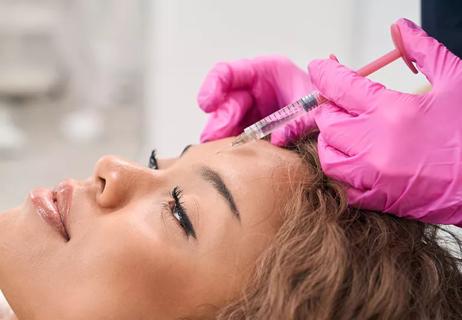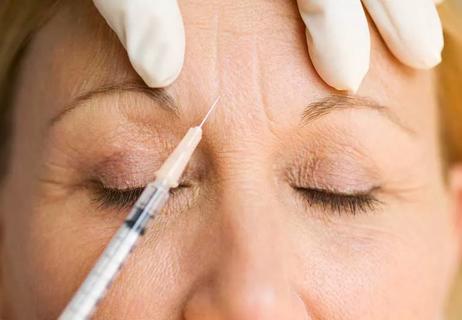The benefits go beyond cosmetic enhancements

If you’re living with multiple sclerosis (MS), cerebral palsy or another neurological condition, you may already be well familiar with the idea (and effects) of spasticity. That’s the term for muscles that are stiff or that move involuntarily as a result of nervous system damage. For example, people experiencing spasticity may clench their fists, point their toes or cock their head to one side without being in control of those movements.
Cleveland Clinic is a non-profit academic medical center. Advertising on our site helps support our mission. We do not endorse non-Cleveland Clinic products or services. Policy
Spasticity is common in conditions that affect the brain or spinal cord, including:
We talked with rehabilitation specialist Francois Bethoux, MD, about treating spasticity in adults living with MS, cerebral palsy, stroke and other neurological conditions. Your options may surprise you.
Spasticity doesn’t always need to be treated, but when it causes adverse effects such as pain, discomfort, or difficulty moving or performing daily activities, a range of options are available.
If you’re experiencing spasticity, your first lines of defense are usually stretching, exercise and rehabilitation. Your doctor may also prescribe certain medications such as baclofen, tizanidine or dantrolene.
For people with spasticity that affects only a few muscles, botulinum toxin (or Botox®, the commonly known name brand) has been clinically proven to be helpful.
“Botulinum toxin has been shown to be a low-risk, high-reward treatment option for people living with spasticity,” says Dr. Bethoux. “It effectively relaxes spastic muscles by temporarily changing the communication between nerves and muscles.”
Your doctor may recommend intrathecal baclofen (ITB) or other therapies if your spasticity is more severe and widespread.
Botox is probably best known for its cosmetic uses — it’s a favorite among celebrities looking to keep their faces young and smooth. More than a “magical” eraser for your laugh lines, though, it’s proven to be a powerful tool for those living with spasticity.
Botulinum toxin is a medication derived from a neurotoxin produced by the bacteria Clostridium botulinum. In its natural form, botulinum toxin causes botulism, but the medication form is formulated to not cause botulism. There are three formulations of botulinum toxin A that are approved by the Food and Drug Administration (FDA) for treating spasticity:
In healthy individuals, your brain sends messages to your nerves. Those nerves then release a substance called acetylcholine, which then relays those messages to your muscles. Your muscles contract and move as instructed by your brain.
For people with spasticity, damage to their nerves floods their muscles with messages. Basically, your nerves send out messages telling your muscles to spasm and tense up when your muscles should be allowed to relax.
“What botulinum toxin does is block the release of acetylcholine from the nerve to the muscle, which causes the muscle to relax,” Dr. Bethoux explains. “For patients living with spasticity, relaxing the muscles means less stiffness in the muscles and improved range of motion.”
Your doctor may recommend Botox if your spasticity is limited to only a few muscle groups — your arms or legs, for example. Botox is also helpful when many muscles are spastic, but only a few spastic muscles are causing issues.
Botox can be used in addition to other treatments for spasticity.
Botox is given as an intramuscular injection (a shot that goes into your muscle). The injections are given during an outpatient visit, which will probably last about 30 minutes to 45 minutes.
Because Botox doesn’t travel far from the injection site, your doctor will likely perform several injections during your visit. To ensure the medication is injected in the right place, electrical signals are recorded from your muscle or sent through the needle into your muscle during the injection. Sometimes, ultrasound is used to directly visualize your muscle and the needle.
“After an injection, you may not notice any difference for a few days, even up to two weeks. That’s perfectly normal,” notes Dr. Bethoux. “Once the effects take hold, you should see improvements that last for about two to three months.”
Treatments are generally repeated every three months. In many cases, physical or occupational therapy may be recommended after the injections to maximize the benefits. You’ll also be advised to stretch and exercise daily at home.
As with any treatment method, there are pros and cons of using Botox to treat spasticity.
Botox therapy is generally considered a safe option for people living with spasticity.
“The most common side effect is that patients may experience some pain and bleeding at the time of injection and soreness or bruising for a few days following the injections,” Dr. Bethoux explains. “In rare instances, you may feel tired or have flu-like symptoms for a day or two after treatment.”
Rare but potentially concerning side effects also include spreading of the effects beyond the muscles injected, potentially causing temporary diffuse weakness, or difficulty swallowing or breathing.
Botox can also have a weakening effect on the muscles that are injected, which is why the muscles and doses injected should be carefully chosen. Those who continue Botox therapy for the long term may experience atrophy (thinning) in the muscles that are injected. Stopping Botox treatments will generally reverse this effect.
Your doctor will be able to determine whether you’re a candidate for Botox. The treatment plan will always be a shared decision between you and your doctor, based on your symptoms, goals and preferences. Although it doesn’t work for everyone, many people find relief from Botox.
“We’ve found Botulinum toxin therapy to be a useful approach in the treatment of spasticity for people living with neurological conditions,” Dr. Bethoux reassures. “When combined with rehabilitation and exercise, Botulinum toxin has the potential to improve quality of life.”
Learn more about our editorial process.

Most recommended precautions center around minimizing bruising or swelling

With repeat injections over time, you may be able to slow the development of new wrinkles

The cosmetic injection may help train your muscles out of frowning, but there’s no hard data to say for sure

One reduces wrinkles by relaxing muscles; the other adds volume and smooths skin

They both treat fine lines and wrinkles, but how they’re made and how long results last differ

The big difference with this procedure is the smaller dosing

Using tape to smooth wrinkles may be a temporary fix, but there are still risks

Stretching and weight-bearing exercises can help

Your metabolism may torch 1,300 to 2,000 calories daily with no activity

A gentle touch in all the right places may help drain your sinuses